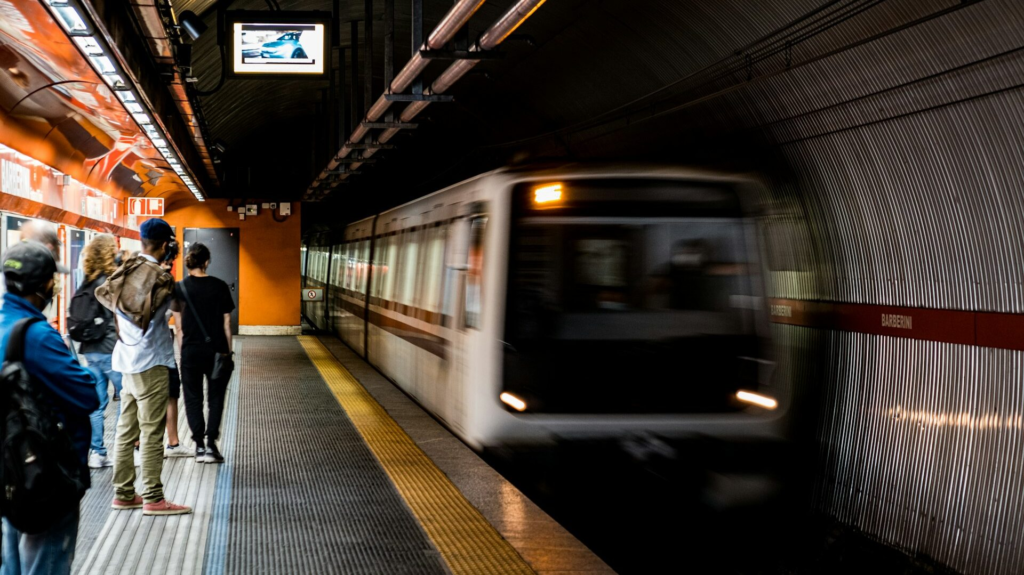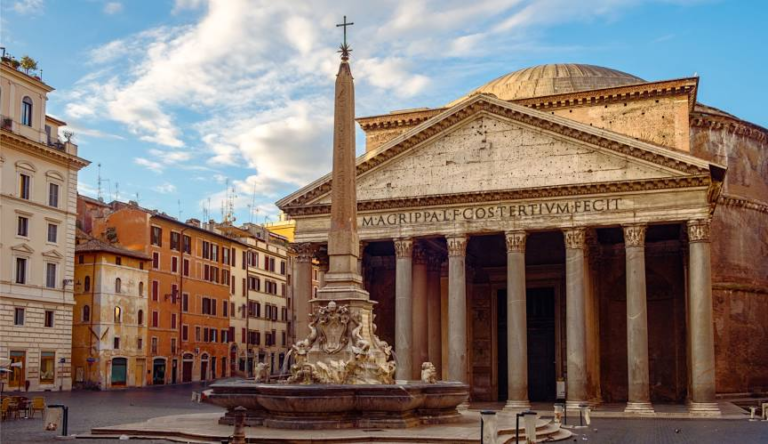Exploring 3 days in Rome might seem challenging, but with the right plan, you can see many of the city’s highlights. I recommend starting with iconic sites like the Colosseum and the Vatican. These spots are essential for anyone visiting Rome for the first time.
After embracing the city’s rich history, it’s time to enjoy its vibrant culture and cuisine. Wandering through neighborhoods like Trastevere offers a true taste of Roman life, adding a unique flavor to your journey.
Throughout my three days in Rome, I found that planning is key. Use priority tickets and insider tips to save time and enhance your experience. Adventures like these are what make this city unforgettable.
This guide will explain how to make the most of your 3-day trip to Rome.
Planning Your 3-Day Itinerary
When spending 3 days in Rome, it’s crucial to have a well-planned itinerary.
Choosing where to stay, knowing how to get around, and deciding the best time to visit can make your trip to Italy much more enjoyable.
How to Get to Rome
When planning your trip to Rome, you must consider how you will reach this enchanting city. Two major airports serve Rome: Leonardo da Vinci International Airport, commonly known as Fiumicino Airport (FCO), and Ciampino Airport (CIA).

If you’re flying in from Europe, you might find low-cost airlines such as Ryanair or easyJet more accessible through Ciampino Airport. This airport often has budget-friendly options, which is beneficial if you want to save money for your 3 days in Rome.
Having traveled from both Europe and Africa to Rome, I suggest the most efficient routes for each. For those coming from Europe, flights to Ciampino are generally less expensive and offer a variety of budget airlines. When I fly from Africa, however, Fiumicino is usually the best option, providing direct connections and a smoother travel experience.
Once you arrive, you will find that the trains and buses offer convenient and affordable transportation into the city’s heart, ensuring that you and I can easily begin our Roman adventure.
Getting Around Rome
Navigating Rome efficiently will save time and energy. I find public transportation convenient and economical. Rome offers buses, trams, and a metro system.

Purchasing the Roma Pass or Omnia Card provides unlimited rides and discounts to various attractions.
For short distances, walking is a great way to explore. You can discover hidden gems and enjoy Rome’s unique atmosphere on foot. If you prefer quicker, taxis and ride-sharing services like Uber are available.
Hop-on, hop-off buses are another option for those who want guided sightseeing. With so many choices, getting around Rome is straightforward and flexible, allowing for a seamless 3-day itinerary.
Where to Stay in Rome
Finding the right place to stay is a key part of your Rome itinerary. I recommend choosing accommodations in the city center, near landmarks like the Colosseum or the Vatican. Staying in central Rome gives you easy access to top attractions and vibrant neighborhoods.
For a budget option, consider hostels or guesthouses. They can be affordable and provide a local experience. If comfort and convenience are priorities, hotels near Piazza Navona or the Spanish Steps offer fantastic amenities.

Booking ahead is wise, especially during peak tourist seasons. Comparing prices on travel websites can help you find the best deals. With options for all types of travelers, you can find where to stay in Rome that suits your needs.
Best Time to Visit Rome
I recommend visiting Rome in the spring or early fall. The weather is pleasant during these months, and crowds are more manageable than during the busy summer.
April to June or September to October are great times to explore the city comfortably.
Remember that Rome can be more crowded during religious holidays or events. Visiting during the off-peak season might offer lower prices and a quieter experience. Checking the local event calendar can help avoid potential crowds.
Exploring Rome’s Must-See Attractions
Rome, the Eternal City, offers a rich tapestry of history, art, and culture. You can explore ancient ruins, breathtaking art, and hidden gems in three days. Each day presents an opportunity to experience a unique facet of this iconic city.
Day 1: Ancient Rome and the Vatican
I started my journey with a visit to The Colosseum, a marvel of ancient engineering and a UNESCO World Heritage Site. Walking the arena floor, I imagined gladiatorial matches thrilling ancient Romans.

Nearby, the Roman Forum and Palatine Hill unveiled stories of triumphal processions and political life.
In the afternoon, I headed to Vatican City. The Vatican Museums were a treasure trove of art, culminating in Michelangelo’s Sistine Chapel. St. Peter’s Basilica stunned with its grandeur and Raphael’s artistry, and I wandered St. Peter’s Square, awed by its architecture.
Day 2: Baroque Art and Leisurely Strolls
The second day was dedicated to Rome’s Baroque beauty. I marveled at the architectural genius of the Pantheon’s dome.

I tossed a coin into the Trevi Fountain and climbed the Spanish Steps for a panoramic view of the city.
I admired Bernini’s Fountain of Neptune in Piazza Navona and soaked up the vibrant atmosphere. I spent my afternoon at the Borghese Gallery, surrounded by masterpieces in a peaceful setting, before wandering through Villa Borghese gardens for a relaxing break.
Day 3: Off the Beaten Path and Culinary Delights
On the final day, I explored Rome’s hidden treasures. Walking the ancient Appian Way, I visited the intriguing Catacombs.
I discovered unique shops and local eateries in the Jewish Quarter, a perfect spot for food lovers to indulge in gelato and authentic pizza.
I enjoyed wine tasting in Trastevere in the evening, basking in the lively ambiance. I concluded my journey with a visit to the Giardino degli Aranci on Aventine Hill, where the picturesque views served as a perfect farewell to the Eternal City.

What to Pack for Your Rome Trip
Packing for a trip, especially when you only have 3 days in Rome, requires smart choices to ensure you have everything you need without overpacking. Here are some essentials I recommend you take along:
- Comfortable Walking Shoes: Rome is a city best explored on foot, so comfortable shoes are necessary.
- Lightweight Clothing: Depending on the season, light and breathable clothing is ideal for exploring and staying calm.
- Travel Umbrella: While I have experienced sunny days, the weather can be unpredictable, making an umbrella handy.
- Portable Charger: With so much to see and do, you don’t want your phone to run out of battery, mainly if you use it for navigation like I do.
- Reusable Water Bottle: There are many fountains throughout the city where you can fill up and stay hydrated.
- Adapter for Electronics: If you’re coming from outside Europe, an adapter will be necessary to charge your devices.
- Guidebook or Travel App: Having a map or guide can enhance your experience by learning about the rich history and culture as you visit landmarks.
- Sunglasses and Sunblock: Italy can be sunny, so protecting your eyes and skin is important.
These items will ensure you are well-prepared to fully enjoy your brief Roman adventure.
Final Thoughts
Exploring Rome in a limited time may seem challenging, but with focused planning and a suitable itinerary, 3 days in Rome can be advantageous.
By prioritizing key attractions and being prepared with essentials, I’ve been able to experience the essence of this historical city.
Whether marveling at ancient ruins or indulging in authentic Italian cuisine, every moment is valuable. I urge you to immerse yourself in Rome’s rich culture and history, savoring every experience.
Embrace the spontaneity of travel and make your 3 days in Rome a trip to remember. Before you know it, you’ll be planning your next visit!
Frequently Asked Questions
You can see Rome’s famous sights in three days while enjoying local culture and cuisine. I’ll share budget tips, family-friendly activities, must-see places, cultural spots, and dining options.
What are the must-visit attractions to include in a 3-day Rome itinerary?
Iconic landmarks like the Colosseum, Vatican City, and the Pantheon are essential in Rome. I also recommend exploring charming neighborhoods like Trastevere for a more local experience. These spots give a well-rounded taste of Rome’s history and culture. Check out resources like this Ultimate 3 Days in Rome Itinerary for more detailed itineraries.
How can I explore Rome in 3 days on a budget?
Rome offers many free attractions, like its beautiful piazzas and fountains. Walking is a great way to explore the city without spending much. I suggest staying in budget accommodations like hostels or guesthouses and eating at local trattorias for affordable meals.
What is the ideal 3-day itinerary for a family trip to Rome?
For families, I would include visits to kid-friendly sites like the Colosseum, where children can learn about ancient gladiators. The Vatican Museums offer educational experiences as well. A stroll through the Villa Borghese gardens is perfect for outdoor fun.
Can you suggest a 3-day cultural itinerary for first-time visitors to Rome?
First-time visitors should delve into Rome’s rich history and art. I recommend visiting the Vatican Museums, where masterpieces adorn the walls. Don’t miss the Roman Forum for a taste of political history. Complement the trip with a visit to local galleries and churches showcasing stunning Renaissance artworks.
What are the top recommendations for dining and accommodation during a 3-day stay in Rome?
Try staying in centrally located neighborhoods like Monti or near Campo dei’ Fiori, which are known for their vibrant atmospheres. For dining, savor authentic Italian cuisine at local trattorias. I suggest sampling traditional dishes like pasta carbonara or cacio e pepe. Resources like Earth Trekkers can offer more dining options.
How should I prioritize my time in Rome over a 3-day visit to the most iconic sites?
Start with a full day dedicated to ancient Rome, seeing the Colosseum and Roman Forum. Spend the next day enjoying Vatican City and its museums. Leave the final day to explore neighborhoods like Trastevere and experience local life. This approach ensures you cover both historical landmarks and cultural hotspots.
